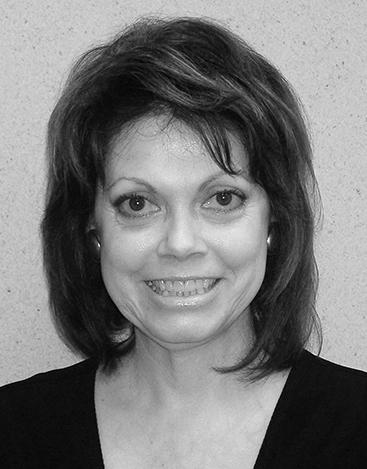From natural disasters to workplace violence and technological malfeasance, the list of potential crises for which professional communicators must prepare continues to grow. Even the dimensions—speed, volume and duration—of a conventional crisis are expanding. Businesses today are operating in the age of the mega-crisis, a time when threats to public health and safety, financial markets, the environment and intellectual property are rarely isolated and must be considered for their likely global impact.
Many PR veterans point to the 9/11 terrorist attacks in the U.S., the severe acute respiratory syndrome (SARS) pandemic and the current economic recession as cases that have created new chapters in their crisis communications playbooks. But what about B2B PR communicators? Does their traditional focus on well-defined business audiences and reputations as cautious adopters of social media pose disadvantages in this mega-crisis era?
There are encouraging signs that social media is already gaining a foothold in more B2B organizations as an effective way to communicate even during this time of relative instability. Yet, while the social media listening posts are in position for some, not enough B2B organizations actively assess the readiness of their crisis communications plans beyond an update of their editorial contacts.
So how can B2B communicators expand their crisis efforts further to meet the era of the mega-crisis? Here, seasoned business communications experts share lessons learned on game-changing crises that reset the bar for their teams.
 |
KELLY KOLB
Director, Corporate Communications
CSL Behring
CSL Behring is a global company that researches, develops, manufactures and markets biotherapies made from human plasma and recombinant technology. People with rare and serious disorders rely on our therapies for their quality of life and, in many cases, for life itself. We have more than 9,000 employees working in 19 countries around the world.
For us, a real game-changer in our crisis and preparedness planning was the scenario of avian and then H1N1 pandemic influenza. We had to take into consideration that a pandemic may spread to certain geographic areas of the business before others and needed to make sure to keep our therapies available to patients up to date and employees safe and informed.
We created pandemic-specific plans to supplement our existing plans and tools, and began to help employees better understand the situation to minimize the fear factor and potential misunderstanding of information, how to stay healthy and what to do if they became ill. We used a wide variety of tools—from posters to in-person communications—and launched a special section on our intranet for resources and Q&As. We made sure we had appropriate tools in place to reach all our audiences during a crisis, particularly our employees.
 |
DAVID PELZER
Senior Vice President, Strategic Communications
Dairy Management Inc.
Dairy Management Inc. (DMI), which manages the national dairy checkoff on behalf of America’s dairy farmers, operates a deep crisis preparedness and response program that involves other dairy organizations, dairy companies, government agencies and stakeholders on the national and local levels.
In early spring 2011, government reports of trace levels of radiation in milk surfaced in several states as a result of the Japanese nuclear accident. DMI worked with other dairy organizations to follow the government’s lead in its messaging to consumers that milk remained safe to drink.
News reports for the most part were factual, but we needed to better understand the impact of all the sensational headlines. DMI’s consumer polling found that while upwards of 40% of Americans were aware of the issue, most found the safety assurances credible and relevant. Even so, retailers told us they were fielding questions from shoppers at the dairy case, so we activated B2B channels to make sure a consumer-friendly Q&A was at the fingertips of dairy companies and food retailers across the country.
 |
JOY CHANDLER
Vice President, Corporate Relations
Kennametal Inc.
Following Hurricane Katrina in August of 2005, state and federal agencies struggled with relief efforts while simultaneously defending against widespread allegations of mismanagement. As the disaster unfolded, Kennametal’s stakeholders began clamoring for information—employees asking if colleagues were safe and how to help; customers inquiring about production issues; media questioning if Kennametal was aiding in disaster relief. We discovered we had our own Katrina response issues to deal with.
Our existing crisis communication plan glossed over natural disasters, so we began immediate revisions to help us communicate more effectively in future disasters. To the information checklist basics like safety of the team, possible customers affected and details on our manufacturing facilities, we added critical suppliers and corporate plans for backup suppliers if needed. We brainstormed potential natural disasters and categorized them as to the types of communication needs they would create for Kennametal’s stakeholders.
Further, we formed a relationship with the Red Cross to help us quickly launch branded disaster sites containing specific company information plus avenues for easily making personal donations.
 |
ARIANA NIKITAS
Senior Manager, Communications
Tellabs
As a global communications equipment provider to some of the world’s largest service providers, Tellabs has a comprehensive crisis communications plan. It includes contact information, a call tree and a detailed checklist. We review and update the plan quarterly, then distribute it to relevant employees.
A few years ago, due to improper installation by a third party, one of our products damaged a customer location. By the time our team was notified, the situation was close to out of control. A daily paper in Ireland and a Chicago television station threatened to run stories blaming the issue on Tellabs.
We put our plan into action and resolved the crisis quickly. But we learned a lesson: While our plan works well once implemented, we hadn’t taught our employees to recognize potential crises. If someone had notified us when the incident first happened, we could have contained it quickly.
We have now expanded our plan two more levels into each business unit. We also publish quarterly internal content to raise awareness on how to recognize crisis situations.
Times of crisis truly test stakeholder relations. The age-old communications philosophy of being responsive and showing care and concern above all other things still rings true. PRN
[Editor’s Note: For more B2B Communications articles, visit the PR News Subscriber Resource Center.]
Contact
B2B Communications is written and compiled by Mary C. Buhay, VP of marketing at New York-based Gibbs & Soell Public Relations. She can be reached at [email protected].
